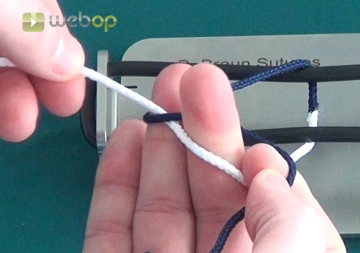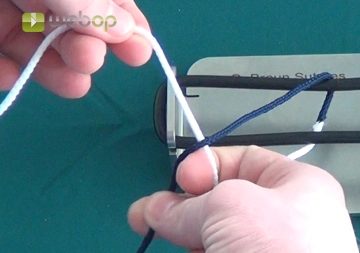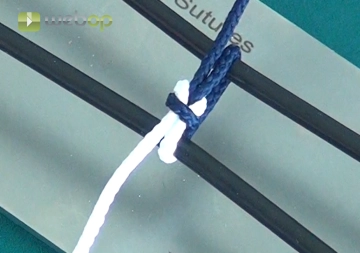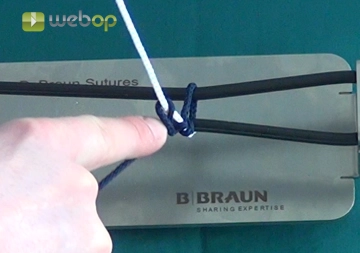Surgical knots may be tied with one hand or two hands. When tying the surgical knot with one hand, one hand applies constant traction on one limb, while the other hand ties a throw or loop with the other limb of the suture. In the two-handed technique, both hands tie the knot equally and thus create a more direct and secure knot (see surgical knot video). The drawbacks of the two-handed technique are the lack of traction on both limbs of the suture and the fact that it is more difficult to learn.
The single-handed technique alternates between knot tying with the index and the middle finger. Knot security is achieved by switching the hand/suture limb applying the traction.
The benefits of this technique include faster tying speed, continuous limb traction (particularly useful when tying at depth, e.g., in the lesser pelvis) and ease of learning. As a rule, only two overlaid loops (i.e., two throws) will lock the knot. Final seating of the first two throws is achieved by alternating the hand/limb applying the traction. The first throw determines the traction on the tissue, while the second locks the first.
The following video sequences illustrate the basic techniques for single-handed knot tying from the perspective of a right-handed surgeon. Here, the "traction limb" is always in the left hand and the "knot tying limb" in the right hand.




